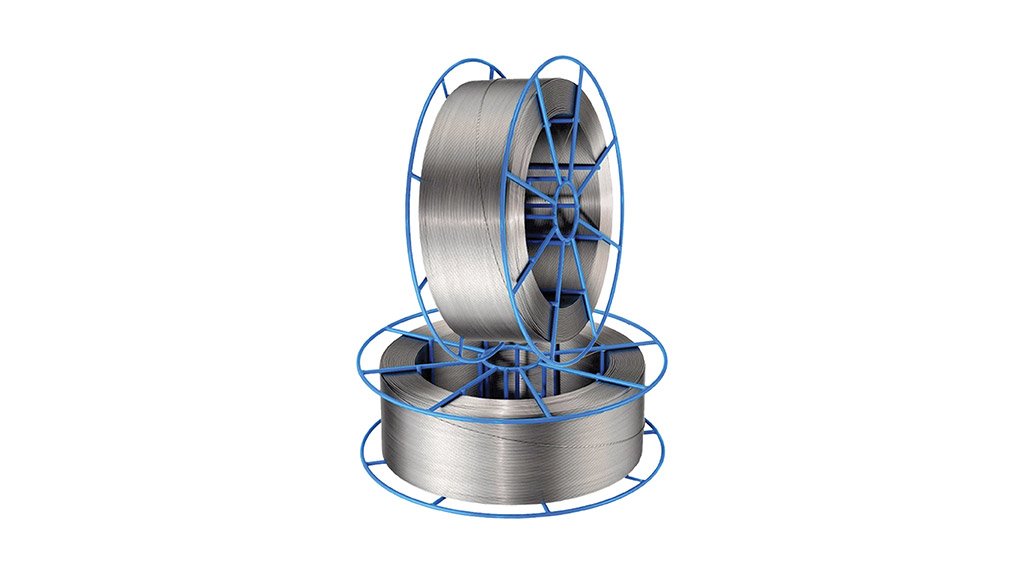Correct use of consumables makes a good weld


IMPORTANT ROLE The welding of stainless steel can be successfully achieved if the welder adheres to the industry rules and standards
Branded welding supplier Unique Welding has significantly upgraded its range of stainless steel consumables to improve weld performance to combat a market flooded with low-quality imported stainless steel welding consumables, Unique Welding CEO Nazmi Adams tells Engineering News.
In addition, Unique Welding has partnered with renowned welding expert John du Plessis from welding and metallurgical consulting service provider Spesmet Technology to support clients with welding technology.
“The successful welding of metals, such as stainless steel, can help mitigate expensive base material waste and, subsequently, prevent welding failures, which would be significantly more costly in the long term,” says Du Plessis.
He notes that welding austenitic stainless steel successfully is not more difficult than welding mild steel; however, it is important that the welder follow the rules and standards set out by the industry.
Du Plessis says these rules include using symmetrical double-sided weld joints instead of single-sided joints. “It is also imperative to always weld in a symmetrical fashion while keeping root gaps to a minimum size.”
Moreover, one must keep bevel angles to the minimum angle stipulated for the weld, as well as heat input in the weld required for fusion and penetration, and finally use back stepping as a welding technique.
Stainless Steel Structure
Du Plessis explains that stainless steel is not a single alloy, but rather a large range of different alloys that can be categorised into austenitic stainless steels, ferritic stainless steels, martensitic stainless steel, duplex stainless steels and the precipitation-hardening stainless steels.
Notably, the most widely used alloy group in industrial applications is austenitic stainless steels.
To account for a better weld, the correct welding consumable grade must be used for each of the austenitic stainless steel grades, he emphasises. The austenitic stainless steels consist of the 200 and 300 types, with the latter the most widely used.
There are matching consumables for most of the grades, the exceptions being grade 304, which is normally welded with a 308-type consumable, and grade 321, which is normally welded with a 347-type consumable.
Consumables – which are your welding rods, contact tips, nozzles and diffusers – are either categorised as a straight consumable or carry a suffix. The suffix can be L (a low carbon alloy), H (higher carbon) or N (nitrogen bearing).
For shielded metal arc welding, the 15, 16 and 17 types are used. A 15-type electrode has a lime-based coating and is intended for direct current (dc) electrode positive polarity only. The slag covering is not as thick as that found on the 16- and 17-type coatings.
The weld bead is normally convex in a horizontal fillet weld, with excellent crack resistance. The 15-type electrode provides the best all positional weldability; however, the arc is harsher than the other types.
The 16-type electrode has a rutile-based coating and can be used with both dc and alternating current (ac) polarity. The weld bead in a horizontal fillet is almost flat, while the arc is much softer than the 15-type electrodes, with good all positional welding.
The 17-type electrode has a silica-rutile type coating, and can be used with dc and ac polarity. The additional silicon in the coating acts as a wetting agent, increasing puddle fluidity.
The 17-type electrodes produce a concave weld bead in a horizontal fillet weld and are often used for flat horizontal position welding. These electrodes have limited vertical welding capability. The arc is smooth and relatively soft when welding.
“Given the price difference between these types, the cheapest and often incorrect type is selected by the client or sold incorrectly by a supplier,” highlights Adams.
The austenitic stainless steels do not undergo phase transformation during the heating and cooling cycles during welding as do carbon and low-alloy steels.
Preheating is, therefore, not required to slow the cooling rate in the heat-affected zones to prevent the formation of hard brittle microstructures, such as martensite, which promote cracking.
Austenitic stainless steels are prone to weld metal cracking – hot or solidification cracking – during solidification of the weld pool.
Challenges when welding austenitic stainless steels include hot cracking, contamination, corrosion because of the welding and also distortion.
Adams concludes that a client must “carefully scrutinise the type of consumable, compare actual alloying compositions and consider the risk of weld rework before buying the consumable”.
Article Enquiry
Email Article
Save Article
Feedback
To advertise email advertising@creamermedia.co.za or click here
Comments
Announcements
What's On
Subscribe to improve your user experience...
Option 1 (equivalent of R125 a month):
Receive a weekly copy of Creamer Media's Engineering News & Mining Weekly magazine
(print copy for those in South Africa and e-magazine for those outside of South Africa)
Receive daily email newsletters
Access to full search results
Access archive of magazine back copies
Access to Projects in Progress
Access to ONE Research Report of your choice in PDF format
Option 2 (equivalent of R375 a month):
All benefits from Option 1
PLUS
Access to Creamer Media's Research Channel Africa for ALL Research Reports, in PDF format, on various industrial and mining sectors
including Electricity; Water; Energy Transition; Hydrogen; Roads, Rail and Ports; Coal; Gold; Platinum; Battery Metals; etc.
Already a subscriber?
Forgotten your password?
Receive weekly copy of Creamer Media's Engineering News & Mining Weekly magazine (print copy for those in South Africa and e-magazine for those outside of South Africa)
➕
Recieve daily email newsletters
➕
Access to full search results
➕
Access archive of magazine back copies
➕
Access to Projects in Progress
➕
Access to ONE Research Report of your choice in PDF format
RESEARCH CHANNEL AFRICA
R4500 (equivalent of R375 a month)
SUBSCRIBEAll benefits from Option 1
➕
Access to Creamer Media's Research Channel Africa for ALL Research Reports on various industrial and mining sectors, in PDF format, including on:
Electricity
➕
Water
➕
Energy Transition
➕
Hydrogen
➕
Roads, Rail and Ports
➕
Coal
➕
Gold
➕
Platinum
➕
Battery Metals
➕
etc.
Receive all benefits from Option 1 or Option 2 delivered to numerous people at your company
➕
Multiple User names and Passwords for simultaneous log-ins
➕
Intranet integration access to all in your organisation















